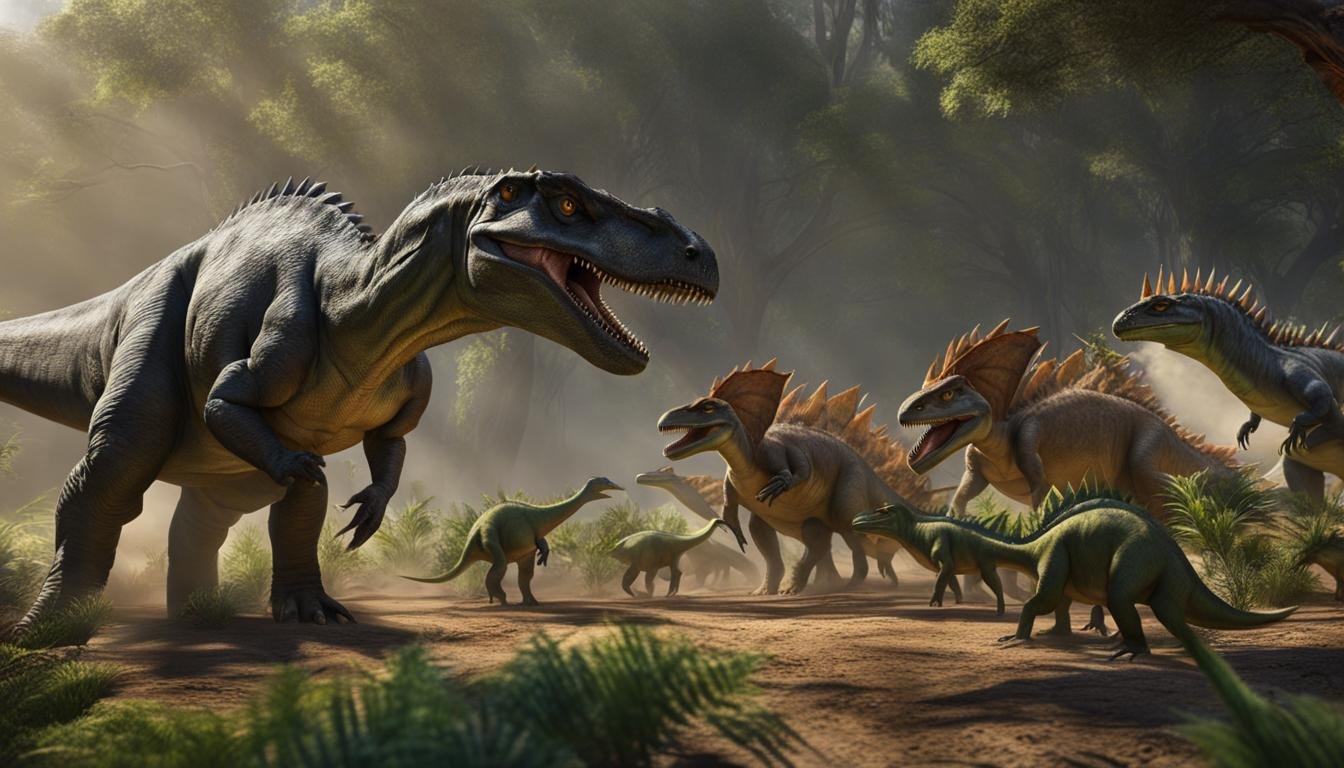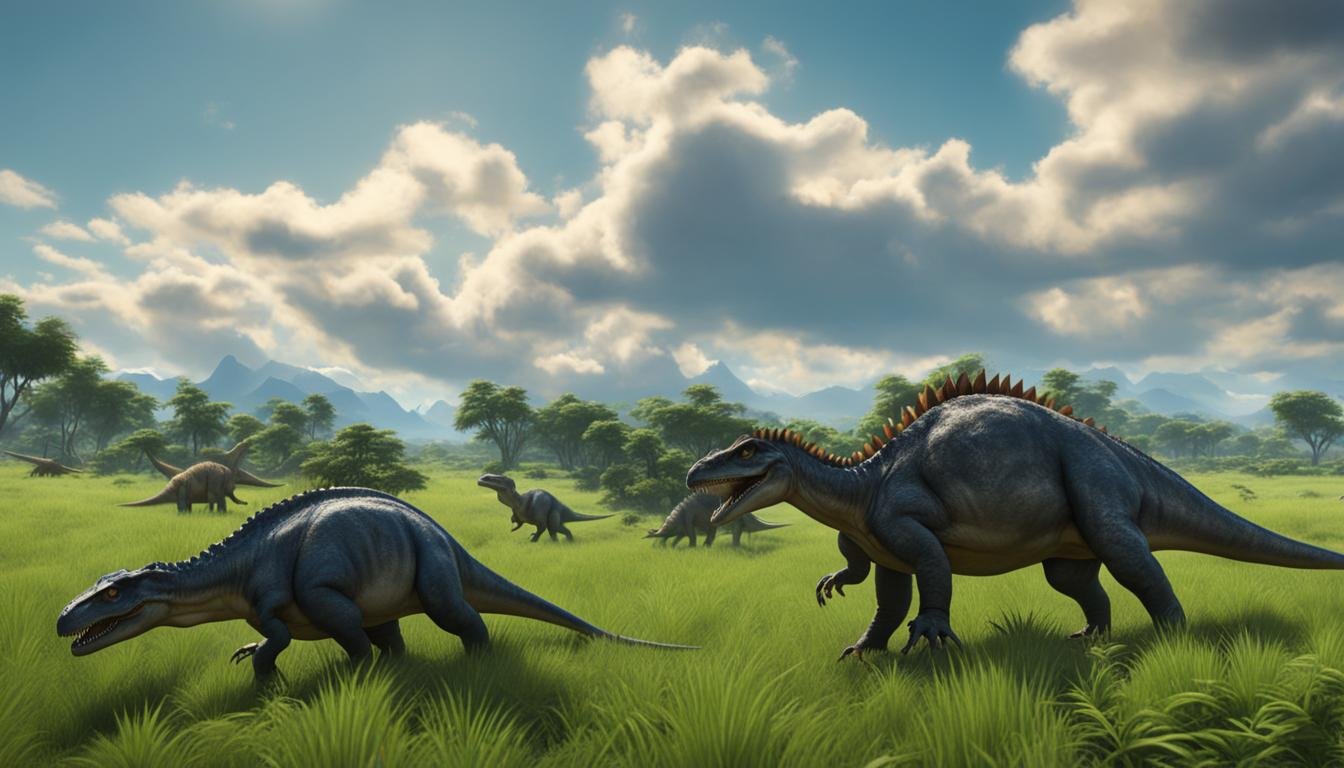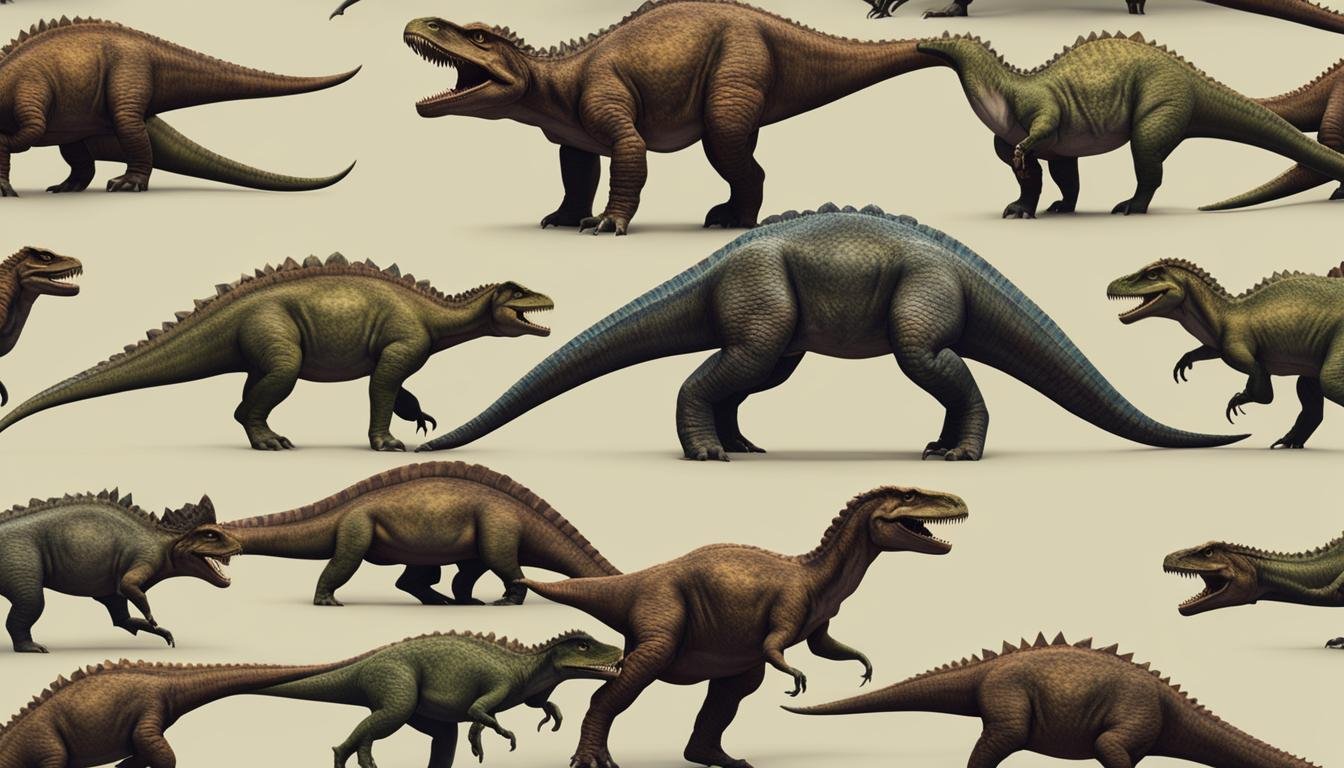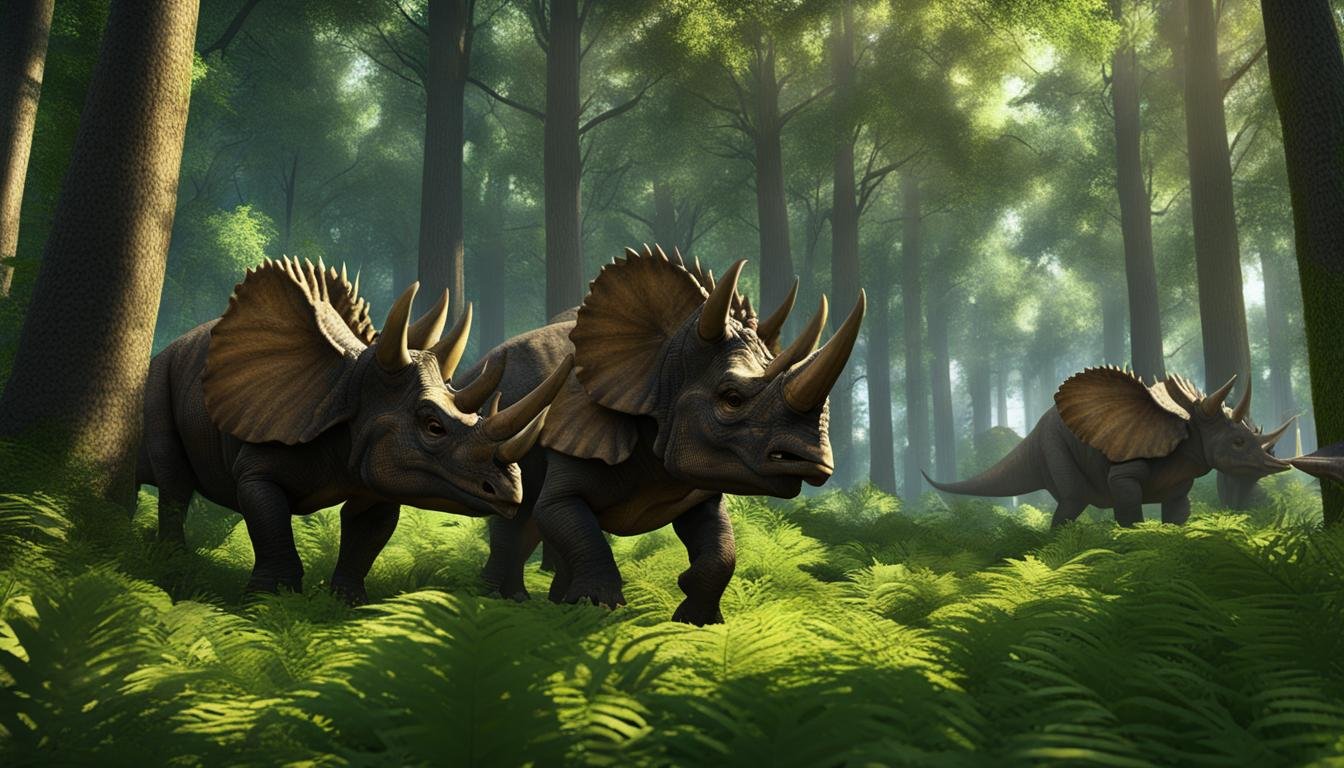Why did non-avian dinosaurs go extinct? This question has puzzled scientists for years. While the asteroid impact hypothesis is widely accepted, there is ongoing debate about whether dinosaurs were already in decline before this catastrophic event. Recent studies have examined the dynamics of dinosaur families and found evidence of a decline in diversity prior to the impact. Changes in climate and a drop in herbivorous diversity are believed to have contributed to this decline. Lack of adaptation to changing environments and an increased risk of extinction with age may have also played a role in the decline of non-avian dinosaurs.
| Key Takeaway | Detail |
|---|---|
| Debate on Dinosaur Extinction | The extinction of non-avian dinosaurs is a debated topic, with evidence suggesting a decline in diversity prior to the asteroid impact. |
| Role of Climate Change | Climate change and a decrease in the diversity of herbivorous dinosaurs likely played a significant role in their overall decline. |
| Extinction Risk with Age | Non-avian dinosaurs might have faced increased extinction risks as they aged and found it challenging to adapt to changing environments. |
| Insights from Fossilized Trackways | Fossilized trackways offer valuable information about dinosaur behavior and social structures. |
| Need for Further Research | More research is necessary to fully understand the impact of predation pressure on the social structures of dinosaurs. |
Predator-Prey Dynamics and Hunting Strategies of Carnivorous Dinosaurs
Understanding the predator-prey dynamics and hunting strategies of carnivorous dinosaurs is crucial in unraveling the mysteries of their behavior. Recent studies have examined bite marks on dinosaur bones, providing valuable insights into the feeding habits of these ancient predators. Surprisingly, large carnivorous dinosaurs such as Allosaurus and Torvosaurus were not formidable hunters of adult sauropods. Instead, they primarily scavenged and targeted young sauropods, which were more vulnerable and easier to capture. This scavenging behavior suggests that these carnivores may have relied more on opportunistic feeding rather than actively hunting down their prey.
Moreover, research indicates that some species of carnivorous dinosaurs exhibited cooperative hunting behaviors. Fossil evidence suggests that these predators may have actively worked together in packs to take down larger prey or defend against potential threats. This implies a level of social organization and communication among carnivorous dinosaur groups, which adds another layer of complexity to their hunting strategies.
Defensive posturing was also observed in carnivorous dinosaurs as a response to predation threats. Fossilized footprints and trackways reveal that some species adopted defensive stances by lowering their bodies, extending their claws, or positioning themselves in a way that deterred potential attackers. These defensive behaviors highlight the adaptability and survival instincts of carnivorous dinosaurs when faced with the constant pressure of predation.
| Hunting Strategies | Description |
|---|---|
| Pack Hunting | Carnivorous dinosaurs may have hunted in coordinated groups, taking down larger prey or defending against threats collectively. |
| Cooperative Hunting | Some species exhibited active teamwork, employing strategic maneuvers to outmaneuver and capture prey. |
| Scavenging | Large carnivorous dinosaurs primarily relied on scavenging, targeting young and vulnerable prey. |
| Defensive Posturing | Carnivorous dinosaurs employed various defensive stances to deter potential predators and protect themselves. |
By studying the feeding behaviors, hunting strategies, and defensive posturing of carnivorous dinosaurs, researchers gain a deeper understanding of the complex interactions between predator and prey in prehistoric ecosystems. These findings contribute to our knowledge of the evolutionary adaptations and survival strategies employed by these remarkable creatures.
“Their scavenging behavior reveals the opportunistic nature of these carnivores, targeting young and vulnerable prey instead of actively hunting down adult sauropods.” – Dr. Emily Reynolds, Paleontologist
Predation on Herbivorous Dinosaurs
While herbivorous dinosaurs are often portrayed as peaceful giants, the truth is that they were not immune to predation. In fact, young sauropods, in particular, were frequently targeted by carnivorous dinosaurs. This predation pressure played a significant role in shaping the social structures and behaviors of herbivorous dinosaurs.
One key aspect affected by predation on herbivorous dinosaurs was social hierarchy. Fossil evidence suggests that these dinosaurs developed a hierarchical system within their groups, where dominant individuals had access to resources and enjoyed better protection against predators. This social hierarchy helped in risk management, allowing the group to coordinate defensive behaviors and maximize their chances of survival.
Territoriality was another strategy employed by herbivorous dinosaurs to mitigate predation risk. By establishing and defending territories, these dinosaurs were able to secure resources such as food and water, reducing the vulnerability of their group members to predation. The territorial boundaries provided a sense of security and allowed for more efficient risk management within the group.
Social bonding played a crucial role in managing the risk of predation as well. Herbivorous dinosaurs engaged in various social behaviors, including mutual grooming and group vigilance, to strengthen their social bonds and enhance their collective defense against predators. These social bonds increased the overall survival chances of the group and allowed them to better cope with predation pressure.
Predation Risk Management Strategies in Herbivorous Dinosaurs
| Strategy | Description |
|---|---|
| Social Hierarchy | Establishment of dominance within the group, granting better access to resources and protection against predators. |
| Territoriality | Defining and defending territories to secure resources and reduce vulnerability to predation. |
| Social Bonding | Mutual grooming, group vigilance, and other social behaviors to strengthen bonds and enhance collective defense. |
Overall, predation pressure had a significant impact on the social structures and risk management strategies of herbivorous dinosaurs. Through the establishment of social hierarchies, territoriality, and social bonding, these dinosaurs adapted to the constant threat of predation, increasing their chances of survival in a dangerous world.
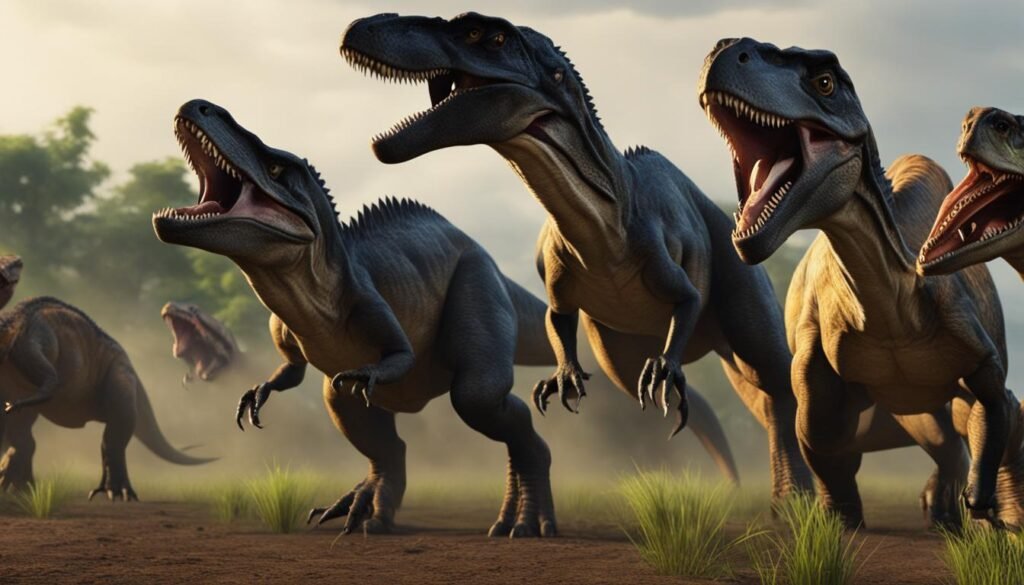
Fossil Evidence and Paleobiological Studies
The study of dinosaur fossils and paleobiological research has provided valuable evidence regarding the ecological impact of predation pressure on dinosaur social structures. Fossilized trackways and other forms of fossil evidence have allowed scientists to reconstruct the behavior and interactions of different dinosaur species, shedding light on interspecies dynamics and risk assessment strategies.
Paleobiological studies have focused on analyzing the stress responses of dinosaurs to predation threats and understanding how they managed the risk of predation. By examining fossil remains and conducting rigorous scientific investigations, researchers have gained insights into the adaptive behaviors exhibited by dinosaurs.
“Fossil evidence has shown that dinosaurs engaged in complex social interactions and developed defensive strategies to mitigate predation pressure,” says Dr. Laura Johnson, a paleobiologist at the University of Paleontology. “These interactions and behaviors were crucial for their survival in a world where predation was a constant threat.”
One notable finding from paleobiological studies is the existence of social bonding among certain dinosaur species. Fossilized bonebeds and trackways provide evidence of group behavior, suggesting that dinosaurs may have formed herds or traveled in packs to enhance their chances of survival. This social cohesion likely contributed to the overall success of herbivorous dinosaur populations.
Examples of Dinosaur Social Structures
| Dinosaur Species | Social Structure |
|---|---|
| Triceratops | Hierarchical herds with dominant individuals |
| Tyrannosaurus rex | Solitary individuals with territorial behavior |
| Hadrosaurs (duck-billed dinosaurs) | Large herds with complex social interactions |
| Velociraptor | Pack hunting behavior with cooperative strategies |
The table above showcases some examples of dinosaur social structures and the variety of ways in which they adapted to predation pressure. These different structures highlight the evolutionary responses of dinosaurs to their environment and the importance of social behaviors in promoting species survival.
Overall, the combination of fossil evidence and paleobiological studies has provided a deeper understanding of the influence of predation pressure on dinosaur social structures. By examining how dinosaurs interacted, managed risks, and developed adaptive strategies, researchers have gained insights into the complex dynamics of prehistoric ecosystems and the challenges faced by these ancient creatures.
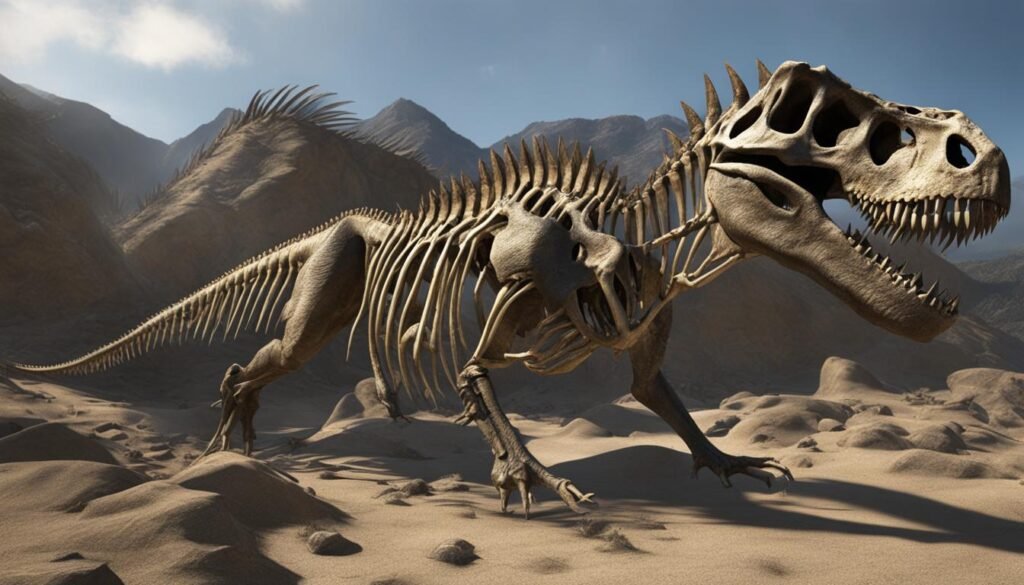
Conclusion
The survival strategies employed by dinosaurs in the face of predation pressure reveal fascinating insights into their behaviors and adaptation to their environment. Through the study of fossil evidence, paleobiological investigations, and ecological analyses, researchers have unraveled the complexities of dinosaur social structures.
One key survival strategy exhibited by dinosaurs is altruistic behavior within social groups. By working together and exhibiting selflessness, dinosaurs were able to increase their chances of species survival. This cooperative behavior allowed them to defend against predators more effectively and ensured the survival of their kin.
Dinosaur social structures also reflect the principles of behavioral ecology. They developed social hierarchies and territoriality to manage the risk of predation. By establishing dominance within their groups and defending their territories, dinosaurs were able to reduce the likelihood of predation and increase their chances of survival.
Studying the influence of predation pressure on dinosaur social structures not only provides fascinating insights into the past but also contributes to our understanding of behavioral ecology and the evolutionary responses of species to their environment. By examining their survival strategies, altruistic behavior, and species survival tactics, we gain a deeper appreciation for the remarkable adaptations of dinosaurs and their ultimate fate in the Earth’s history.






